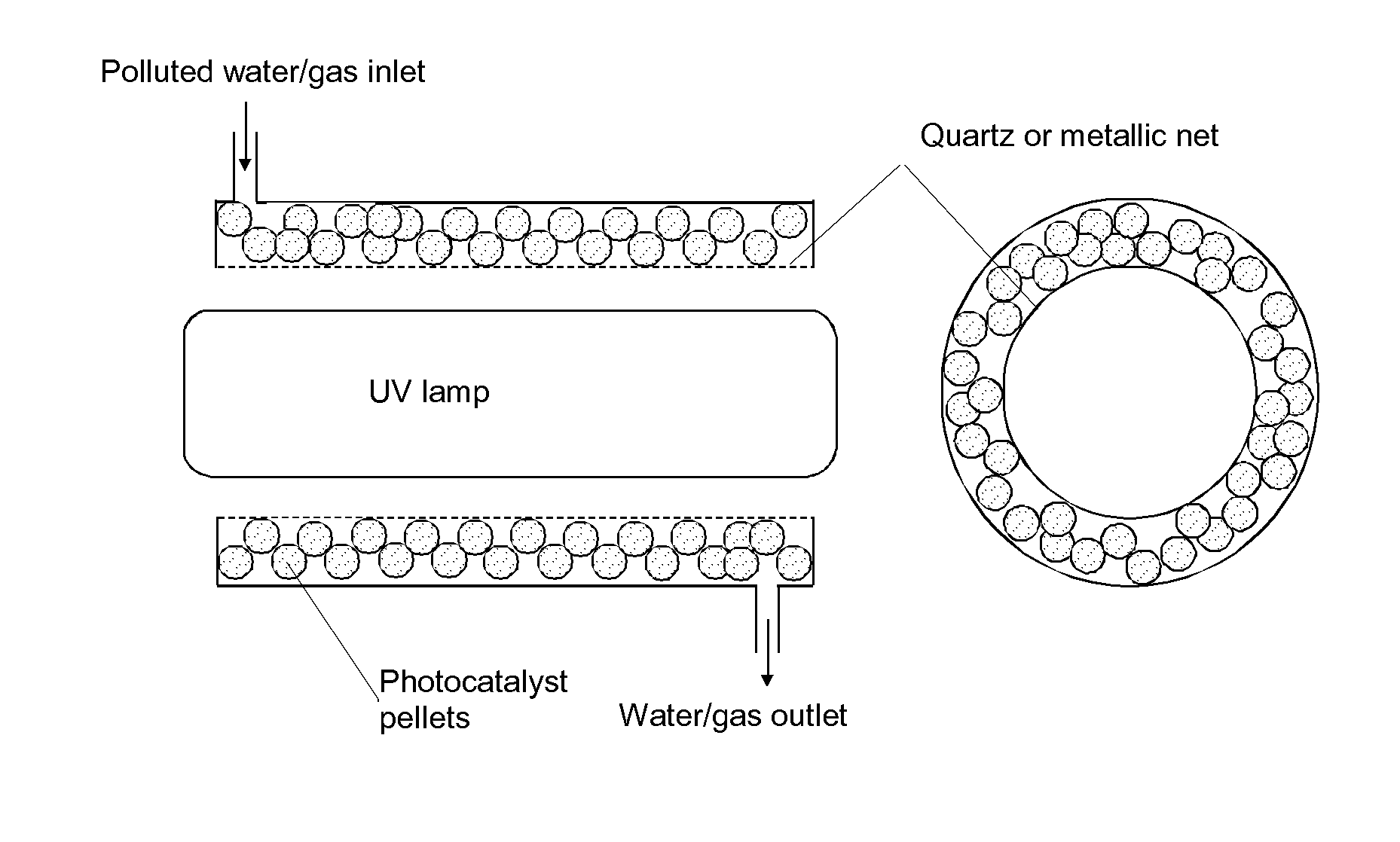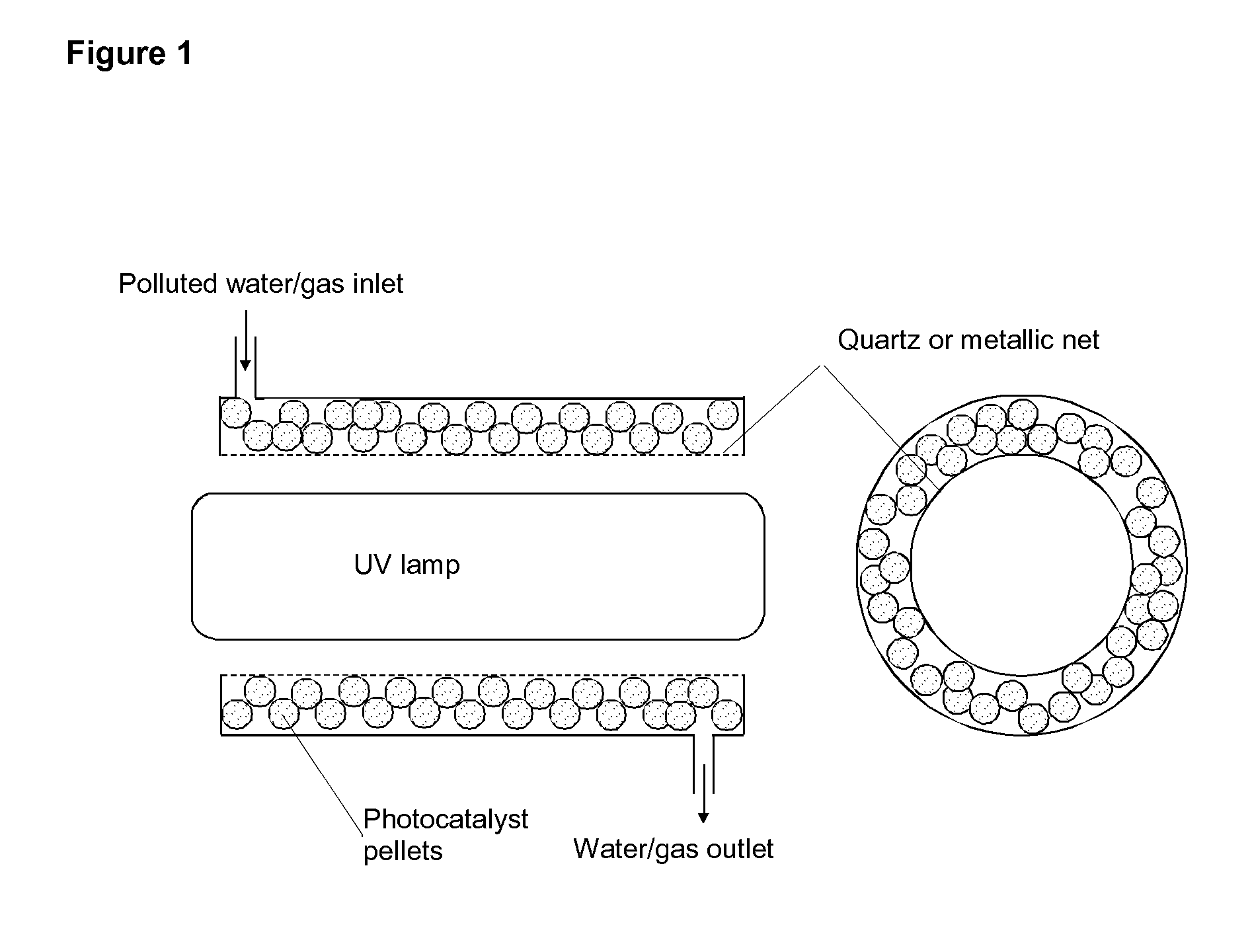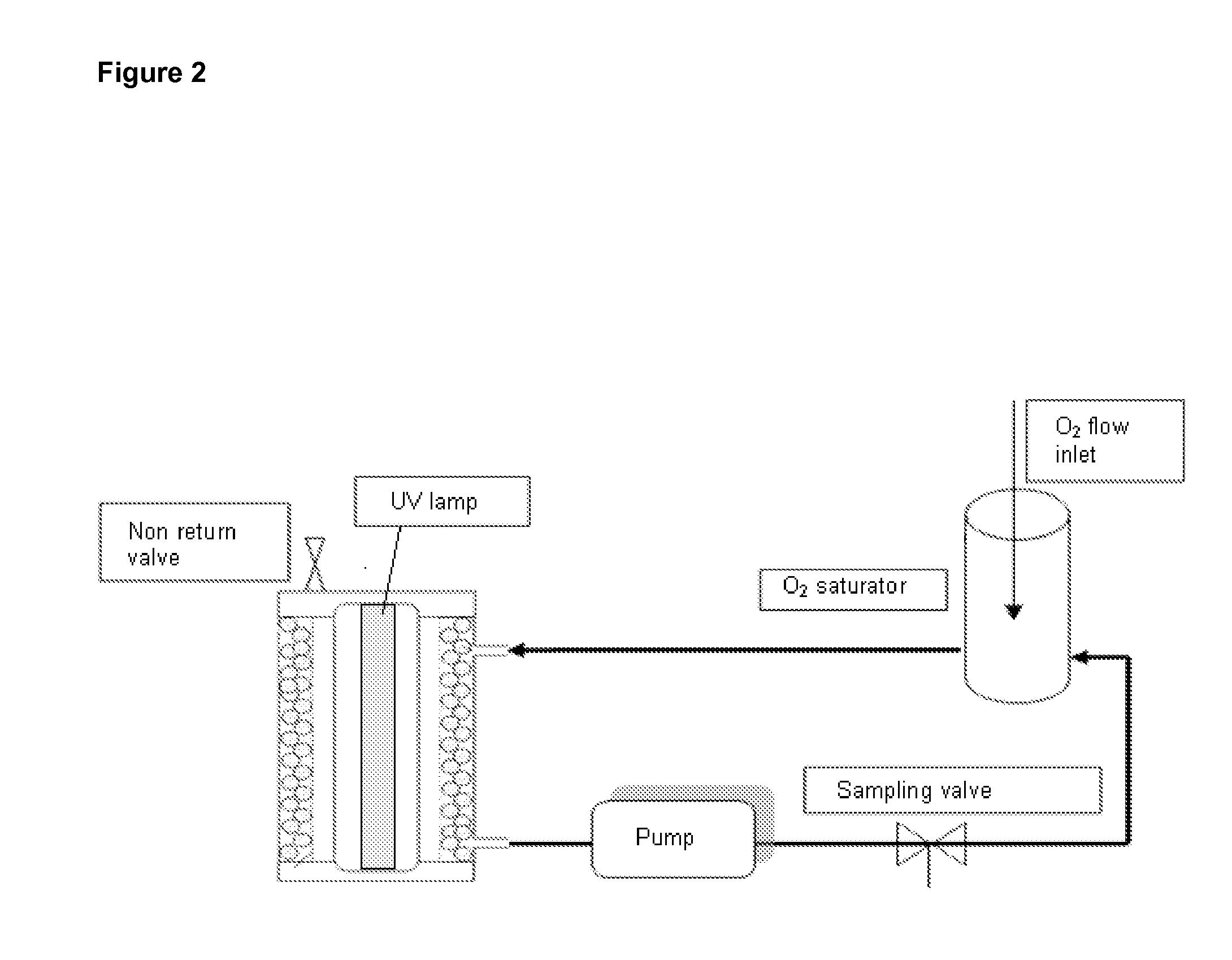Photocatalytic composite material
a composite material and photocatalytic technology, applied in the direction of physical/chemical process catalysts, separation processes, filtration separation, etc., can solve the problems of difficult post-use recovery, high cost and time-consuming separation/recycling processes, and the danger of titanium dioxide nanoparticles when dispersed in the surrounding environment, etc., to achieve effective interaction of titanium dioxide, high macroporosity, and easy access to catalyst surface sites
- Summary
- Abstract
- Description
- Claims
- Application Information
AI Technical Summary
Benefits of technology
Problems solved by technology
Method used
Image
Examples
example 1
Functionalization of Titanium Dioxide Nanoparticles
[0049]Nanocrystalline titanium dioxide anatase was obtained by hydrothermal synthesis according to a known procedure, by reacting aqueous solutions of TiOCl2 (Aldrich, 99%) and NH3 (Fluka, >25 wt %) in a Teflon lined autoclave (Parr, model 4768Q). The autoclave was heated at a rate of 2.67° C. / min to 30° C. below the set-point temperature, then at a rate of 0.75° C. / min up to 220° C. TiO2 surface was functionalized as follows: in anhydrous conditions, 20 mL of the organic reagent (propionic acid, PA; or hexylamine, HA; or 2-methoxyethylamine, MA) was added to 3.30 g of TiO2 anatase suspended, after ultrasound treatment, in 40 mL of anhydrous methanol. The amount of the organic reagents was in large excess compared to the oxide. The obtained suspension was refluxed for 8 hr and kept overnight under stirring at room temperature. Finally, the particles were separated by centrifugation at 6000 rpm for 30 minutes and recovered by decanta...
example 2
Preparation of TiO2 / SiO2 Composite Material (TS)
[0050]0.723 g of PEG 20000 were dissolved in 6.90 mL of a solution of acetic acid 0.10 M. After complete dissolution of the polymer, 150 mg of nanocrystalline titanium dioxide particles, functionalized with 2-methoxyethylamine as described above—corresponding to a 10.7 wt % nominal content in the final composite material—were added to the solution and are uniformly dispersed by ultrasound treatment. Subsequently, 3.10 mL of tetra-methoxysilane were added under stirring. The solution was put in a Teflon mould having cylindrical cavities of 1 cm diameter and 1 cm height. The mould was closed and was placed in an oven at 100° C. for 24 hr and, subsequently, at 80° C. for further 24 hr.
[0051]The sample was then calcined in air at 500° C. in for a time sufficient to eliminate by combustion the organic / inorganic precursors residues (hydrophobically-functionalizing organic molecules, template-forming polymer and residue of the acids) (about 5...
example 3
Photocatalytic Test
[0055]The TiO2 / silica composite material prepared according to the above procedures was tested in reactions of oxidative degradation of phenol in solution. The system used for the test is schematically shown in FIG. 2.
[0056]The recirculation plant was endowed with a photoreactor of the type shown in FIG. 1 with a housing for catalyst pellets, a UV lamp coaxial to the reactor, a saturator for oxidizing the solution and a peristaltic pump for recirculating the solution. The operative conditions were as follows: 600 mL aqueous solution of phenol (120 ppm); 11.0 g of pellets of TiO2 / silica composite material; oxygen saturated solution; recirculation rate 14 mLs−1; temperature 25° C. The UV lamp was switched on after 1 hour of recirculation in dark.
[0057]Phenol degradation kinetics were determined by measuring the total organic carbon (TOC) in solution (FIG. 3). The catalyst performance was evaluated by calculating the half degradation time t1 / 2, i.e. the time necessar...
PUM
| Property | Measurement | Unit |
|---|---|---|
| temperature | aaaaa | aaaaa |
| temperature | aaaaa | aaaaa |
| temperature | aaaaa | aaaaa |
Abstract
Description
Claims
Application Information
 Login to View More
Login to View More - R&D
- Intellectual Property
- Life Sciences
- Materials
- Tech Scout
- Unparalleled Data Quality
- Higher Quality Content
- 60% Fewer Hallucinations
Browse by: Latest US Patents, China's latest patents, Technical Efficacy Thesaurus, Application Domain, Technology Topic, Popular Technical Reports.
© 2025 PatSnap. All rights reserved.Legal|Privacy policy|Modern Slavery Act Transparency Statement|Sitemap|About US| Contact US: help@patsnap.com



